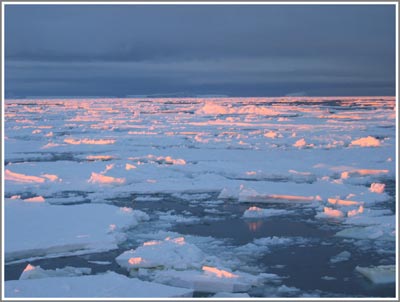Melting ice will cause a global food crisis
The chairman of the Earth Policy Institute warned that water for food production in China and India is at risk of exhaustion when global warming causes glaciers to melt.

(Photo: www.phys.unsw.edu.au )
"In the current context, melting glaciers in Asia are the greatest threat to global agriculture," said Lester Brown, chairman of the Earth Policy Institute.
The Ganges in India, the Yellow River and the Yangtze River in China are supplied by rain during the rainy season, but during the dry season the water supply is mainly for ice in the Himalayas. The Gangotri glacier in the Himalayas alone provides up to 70% of the Ganges water in the dry season.
Dry season is the period when water becomes the most necessary for irrigating rice and wheat fields - two grains that feed billions of people around the world. Last year, the Intergovernmental Panel on Climate Change announced that many Himalayan glaciers could disappear by 2035. According to Lester Brown, Chinese scientists estimate about two-thirds of the glaciers in Tibet highlands - Qinghai may disappear by 2060.
The decline in the amount of water flowing from the glacier may cause the flow of the Ganges River, the Yellow River and the Yangtze River to change seasonally , Lester Brown - who is monitoring the environmental impacts of wage production. real - warning. China and India produce more than half of the world's wheat and rice production. Meanwhile, the basin of the three major rivers provides much of this food. Every year, the Yangtze River irrigates about half of China's rice growing area.
Meanwhile, the remaining fields of China and India are irrigated by water taken from underground aquifers. Due to the impact of pumping operation, the dehydration process takes place faster than the replacement process. The amount of underground water in the two main cereal growing areas - China's northern plateau and India's Punjab region, is declining.
"If both sources of water supply for irrigation channels are lost, the two countries may face food shortages, especially when food demand is increasing with the population growth rate. India, where only more than 40% of children under 5 years of age are malnourished, hunger will increase and the survival rate of children will decrease, "said Lester Brown.
Food threats from the two countries will quickly affect the world. Food traded globally and food prices are escalating dizzily due to the increasing demand for them.
"The only way to avoid the threat is to eliminate inefficient energy policies and cut 80 percent of carbon emissions by 2020," Lester Brown said. According to him, the first step is to ban the construction of coal-fired thermal power plants.
But ironically, China and India are the two countries that are building the most coal-fired thermal power plants in the world. Lester Brown said only wind power could help China double its current electricity output.
In early May, Amir Mohammad, a former Pakistani minister of agriculture, warned that 60% of Pakistan's food depended on the Indus river. Himalayan glaciers also provide water for this river.
"The melting of glaciers has begun to affect the flow of the Indus River , " he said.
- Melting glaciers make the food crisis
- Pluto will be the solution to global food security
- Will salty wheat solve the food crisis?
- Find out the cause of the crisis more than 400 years ago
- Polar bear ice is melting
- Earth turns slower because of global warming
- The Arctic might melt ice in the middle of the century
- Biofuels cause controversy over the food crisis
- WB warned about the global waste crisis
- Greenland ice melted six times faster, raising global sea levels
- What's going on with the Earth's 'refrigerator'?
- Keeping food security during the economic crisis
 Is the magnetic North Pole shift dangerous to humanity?
Is the magnetic North Pole shift dangerous to humanity? Washington legalizes the recycling of human bodies into fertilizer
Washington legalizes the recycling of human bodies into fertilizer Lightning stone - the mysterious guest
Lightning stone - the mysterious guest Stunned by the mysterious sunset, strange appearance
Stunned by the mysterious sunset, strange appearance